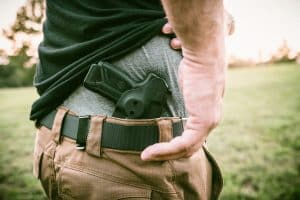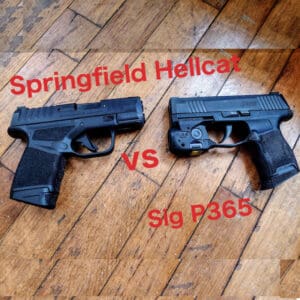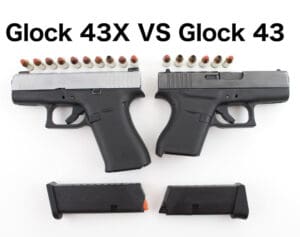
Choosing the Right Holster for Concealed Carry: A Comprehensive Guide
In concealed carry, selecting the right holster is crucial for comfort and effectiveness in a critical situation. This guide will cover the essential factors you should consider to find the perfect holster for your needs, ensuring safety, comfort, and quick accessibility.
Comfort: The Foundation of Everyday Carry
Comfort is paramount when choosing a holster because it directly affects your daily willingness and ability to carry. A holster that causes discomfort can discourage regular carry, defeating its purpose. Holsters come in various shapes and materials, each offering different levels of comfort. For prolonged wear, especially if you’re active throughout the day, look for a holster with a design that minimizes pressure points and doesn’t chafe the skin. Materials such as soft leather or padded kydex can offer additional comfort against the body.
Concealment: Keeping It Under Wraps
Effective concealment is essential to avoid drawing attention to the fact that you’re armed. The holster should keep your firearm out of sight without altering the drape of your clothes significantly. This involves choosing a low-profile holster that sits snugly against your body. The type of clothing you wear can also influence your choice; for example, an inside-the-waistband (IWB) holster might be preferable for someone who frequently wears tighter-fitting shirts.

Accessibility: Quick and Unhindered Access
A holster must allow for a quick and smooth draw when necessary, without compromising security. This means you should be able to reach and draw your firearm with one hand, ideally without looking down. Test the holster to ensure no excessive material could hinder your grip or delay your draw. Accessibility is crucial in emergencies where every second counts.
Retention: Secure Your Firearm
Retention refers to how well the holster holds your firearm in place. Good retention prevents the gun from falling out during daily activities or in a physical altercation. Many holsters offer adjustable retention systems, such as screws on Kydex holsters or retention straps on leather models, allowing you to customize the force needed to draw the firearm. Evaluate different mechanisms and choose one that offers security without impeding a swift draw.
Material Choices: Pros and Cons
The material of the holster affects not only comfort and style but also the functionality:
- Leather: Classic and durable, leather holsters are known for their aesthetics and comfort. Over time, leather molds to the shape of your firearm and body, offering a customized fit. However, leather may require more maintenance and can be less resistant to moisture than synthetic materials.
- Kydex: This thermoplastic material is popular for its durability and low maintenance. Kydex holsters are lightweight, and waterproof, and maintain their shape over time. They offer excellent retention and protection but can be less comfortable against the skin compared to leather.
- Nylon: Nylon holsters are often the most affordable option. They are lightweight and generally comfortable, but they may not offer the same level of durability or firearm retention as Kydex or leather.

Choosing the Right Holster Type
The choice of holster type is influenced by how you dress and your daily activities:
- Inside-the-Waistband (IWB): Great for concealment under a shirt or jacket. IWB holsters sit inside your pants, which helps reduce the weapon’s profile.
- Outside-the-Waistband (OWB): These are easier to draw from and can be more comfortable but are harder to conceal without the right clothing.
- Ankle Holsters: Suitable for small firearms and backup weapons, ankle holsters are less accessible but offer deep concealment.
- Shoulder Holsters: Ideal for those who spend a lot of time sitting or driving, as they provide easy access from a seated position.
Fit and Belt Compatibility
Ensure the holster is specifically designed for your firearm model. A good fit prevents the gun from shifting inside the holster, reducing the risk of accidental discharge and increasing comfort. Additionally, make sure the holster clips or loops are compatible with the belt you plan to wear, as this provides stability and keeps the holster from shifting during movement.
Consider Your Climate
Your local climate can greatly influence your holster choice, especially when it comes to comfort and durability. In hot and humid conditions, breathable materials such as neoprene or mesh and designs that minimize skin contact can help reduce discomfort, moisture buildup, and chafing. Holsters made with moisture-wicking liners can also prevent sweat from accumulating, which helps maintain a secure fit for your firearm and reduces the chance of rust or corrosion on metal components. Additionally, choosing lightweight, low-profile designs can enhance breathability and prevent excess heat retention, making carrying in warmer climates much more comfortable throughout the day.
Practice Makes Perfect
Legal and Personal Preferences
Trying Before Buying
If possible, try different holsters with your firearm before making a purchase. This can help you understand how each holster fits, feels, and suits your carrying style. Many gun stores and ranges will allow you to try holsters with unloaded weapons to get a feel for them.
Choosing the right holster is about balancing multiple factors to find the best fit for your lifestyle and needs. By considering these points, you can select a holster that will provide years of reliable service, ensuring that you carry safely, comfortably, and confidently.
Conclusion
In conclusion, selecting the right holster is crucial to ensuring both safety and comfort in your concealed carry routine. As we’ve discussed, factors like comfort, concealment, accessibility, and retention all play essential roles in finding the ideal holster. By considering material options, holster types, and how your local climate can affect your choice, you’re taking important steps toward a more practical and enjoyable carry experience. Don’t forget the importance of practice; regular training with your chosen holster ensures that you’re ready for any situation. Ultimately, trust your instincts, adhere to local laws, and find a holster that fits seamlessly into your lifestyle to carry with confidence and peace of mind. Visit clingerholsters.com and see if you can find a holster just for you.






